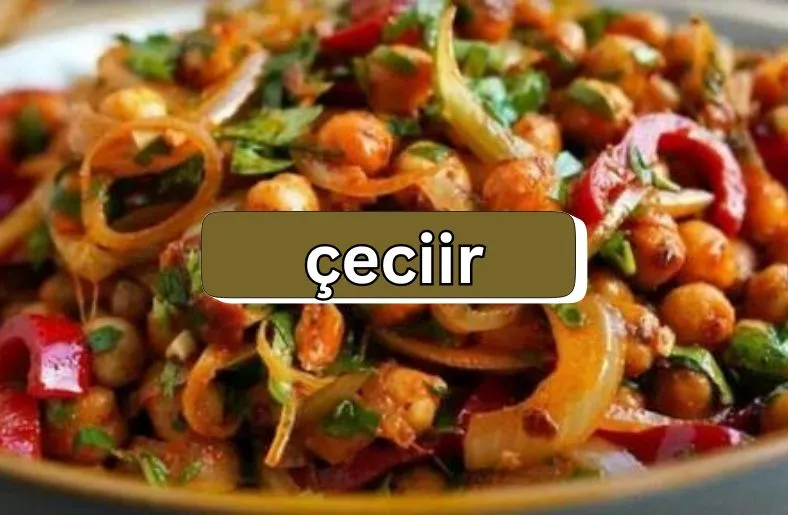Introduction
Çeciir is more than just a term in Turkish cuisine; it’s a gateway to a rich cultural experience. This fascinating concept embodies not only the flavors and dishes of Turkish food but also the shared moments of family and community that come with it. In this blog post, we will explore the world of çeciir, uncovering its deep significance in Turkish culture, its historical roots, and its impact on social life. From its ancient origins to its place in modern meals, çeciir represents a tapestry of traditions and flavors that weave together Turkey’s culinary heritage.
The Concept of Çeciir
Definition and Overview: Çeciir in Turkish culture represents more than just a meal; it’s a celebration of shared experiences. The term encompasses traditional dishes and the communal spirit that accompanies them. It’s about gathering with loved ones around a table, enjoying the richness of Turkish cuisine.
Cultural Significance: Çeciir highlights the importance of communal and familial bonding in Turkish life. It’s not just about the food itself but about the joy of sharing meals with family and friends. Every dish in it carries a story and a sense of togetherness that defines Turkish hospitality.
Historical Origins of Çeciir
Early Influences: The origins of çeciir can be traced back to the nomadic Turkic tribes of Central Asia. These early people brought with them diverse culinary practices as they settled in Anatolia. Their methods and ingredients laid the groundwork for what would become modern Turkish cuisine.
Cultural Exchanges: Over the centuries, Turkish cuisine evolved through the influences of various civilizations. The Hittites introduced early cooking techniques, while the Byzantines added new spices and flavors. The Ottomans, with their expansive empire, fused these elements, refining dishes and creating the rich tapestry of flavors that defines çeciir today.
Signature Çeciir Dishes
Kebabs: Turkish kebabs are renowned for their delicious flavors. Adana Kebab features spicy minced meat, while Shish Kebab consists of grilled meat and vegetables on skewers. Iskender Kebab is sliced meat served over pita with tomato sauce and yogurt.
Meze Dishes: Mezes are small dishes served as appetizers. Hummus is a creamy blend of chickpeas and tahini. Baba Ghanoush combines roasted eggplant with tahini. Dolma consists of grape leaves stuffed with rice and herbs.
Pide and Lahmacun: Pide is a flatbread topped with cheese and meats, resembling a Turkish pizza. Lahmacun is a thin, crispy flatbread with minced meat and herbs, often enjoyed as a snack or quick meal.
Desserts: Turkish desserts are sweet and satisfying. Baklava features layers of filo pastry filled with nuts and syrup. Künefe is a cheese pastry soaked in syrup and topped with pistachios. Lokum, or Turkish Delight, is a chewy candy often with nuts or dried fruit.
The Role of Çeciir in Turkish Social Life
Family Gatherings: Çeciir plays a central role in family meals and celebrations. Turkish families often gather to share these dishes, making each meal a special occasion. It’s a time to enjoy each other’s company and strengthen family bonds.
Community Feasts: At community events and festivals, çeciir dishes are served to bring people together. These feasts showcase the variety and richness of Turkish cuisine and foster a sense of unity among participants.
Hospitality: Turkish hospitality is renowned, and çeciir is a key part of it. Offering generous portions of delicious food is a way to show respect and welcome guests. It embodies the spirit of sharing and caring that defines Turkish culture.
Experiencing Çeciir
In Turkey: To experience çeciir in its authentic form, visit places like Istanbul, Gaziantep, and Antalya. Istanbul offers a mix of traditional and modern dishes, Gaziantep is known for its rich food culture, and Antalya provides fresh seafood and Mediterranean flavors.
Local Turkish Restaurants: If you’re not traveling to Turkey, look for local Turkish restaurants that use authentic ingredients and cooking methods. Reading reviews and asking for recommendations can help you find the best places to enjoy çeciir.
Cooking at Home: You can also try making çeciir dishes at home. There are many online recipes and tutorials that can guide you in preparing traditional Turkish foods. Experimenting with these recipes can bring a taste of Turkey into your kitchen.
Conclusion
Çeciir offers a captivating glimpse into Turkey’s rich cultural and culinary heritage. From its ancient origins to its role in modern Turkish life, çeciir is more than just a collection of dishes; it’s a celebration of community and tradition. Whether enjoyed at family gatherings, communal feasts, or through the exploration of Turkish restaurants and recipes, çeciir brings people together, reflecting the warmth and hospitality that define Turkish culture. Embracing çeciir allows you to experience the essence of Turkey, making every bite a journey through its vibrant history and rich culinary tapestry.





